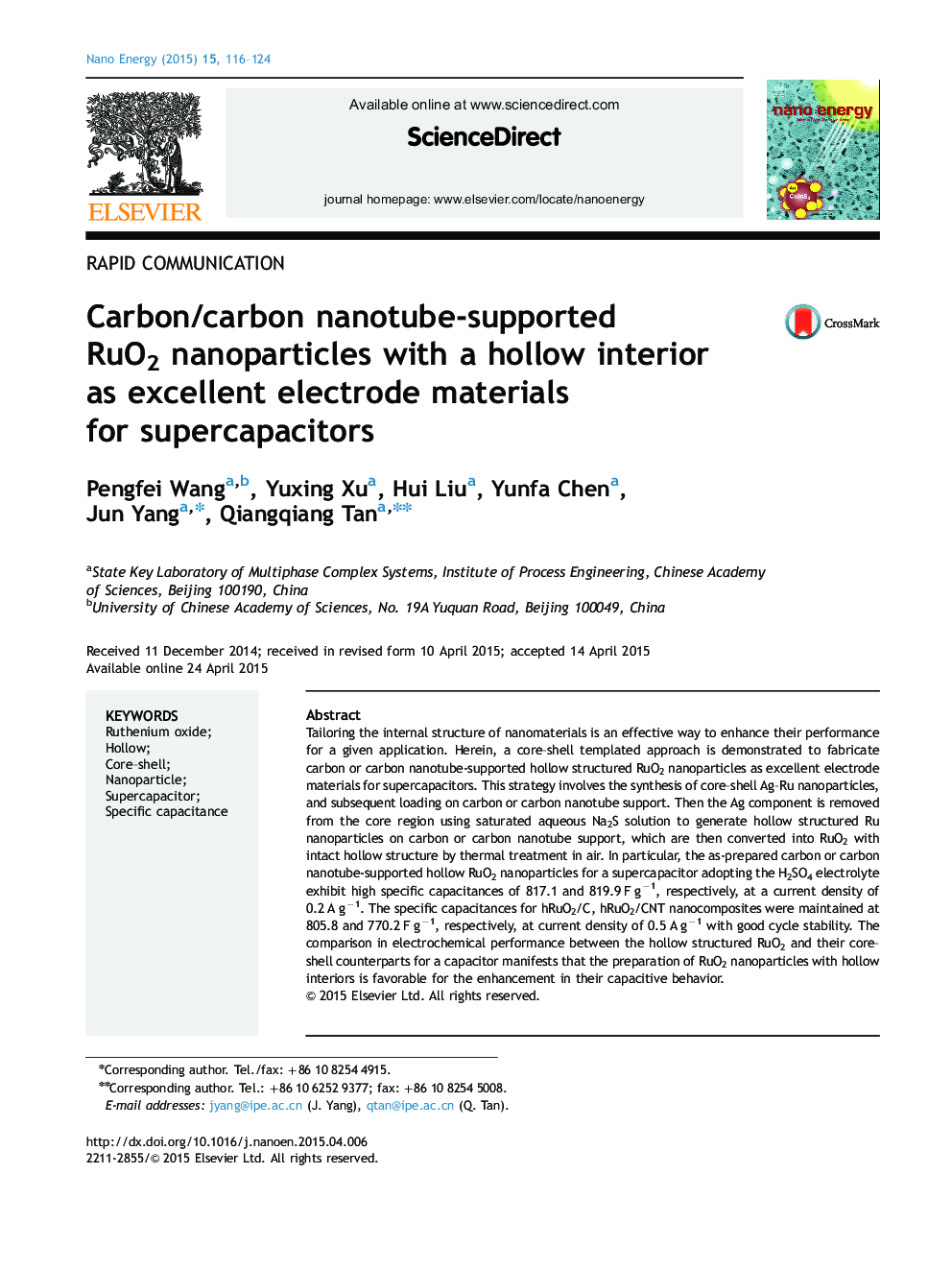| Article ID | Journal | Published Year | Pages | File Type |
|---|---|---|---|---|
| 1557374 | Nano Energy | 2015 | 9 Pages |
•Carbon/carbon nanotube-supported core–shell Ag–Ru nanoparticles were prepared.•Carbon/carbon nanotube-supported hollow Ru nanoparticles were fabricated by eliminating the Ag core.•The hollow Ru nanoparticles were converted into hollow RuO2 nanoparticles on carbon/carbon nanotube.•The carbon/carbon nanotube-supported hollow RuO2 nanoparticles for a supercapacitor exhibit high specific capacitances
Tailoring the internal structure of nanomaterials is an effective way to enhance their performance for a given application. Herein, a core–shell templated approach is demonstrated to fabricate carbon or carbon nanotube-supported hollow structured RuO2 nanoparticles as excellent electrode materials for supercapacitors. This strategy involves the synthesis of core–shell Ag–Ru nanoparticles, and subsequent loading on carbon or carbon nanotube support. Then the Ag component is removed from the core region using saturated aqueous Na2S solution to generate hollow structured Ru nanoparticles on carbon or carbon nanotube support, which are then converted into RuO2 with intact hollow structure by thermal treatment in air. In particular, the as-prepared carbon or carbon nanotube-supported hollow RuO2 nanoparticles for a supercapacitor adopting the H2SO4 electrolyte exhibit high specific capacitances of 817.1 and 819.9 F g−1, respectively, at a current density of 0.2 A g−1. The specific capacitances for hRuO2/C, hRuO2/CNT nanocomposites were maintained at 805.8 and 770.2 F g−1, respectively, at current density of 0.5 A g−1 with good cycle stability. The comparison in electrochemical performance between the hollow structured RuO2 and their core–shell counterparts for a capacitor manifests that the preparation of RuO2 nanoparticles with hollow interiors is favorable for the enhancement in their capacitive behavior.
Graphical abstractA core–shell templated approach to the fabrication of carbon/carbon nanotube-supported RuO2 nanoparticles with hollow interiors as electrode materials for supercapacitors.Figure optionsDownload full-size imageDownload as PowerPoint slide
